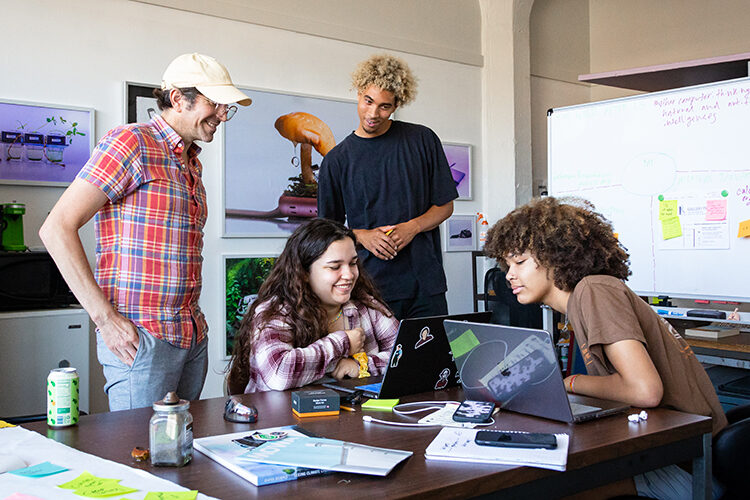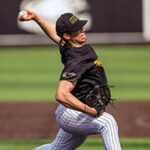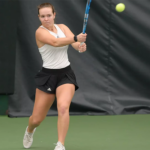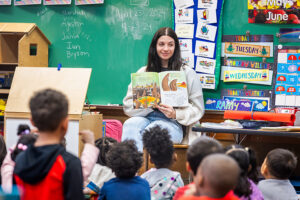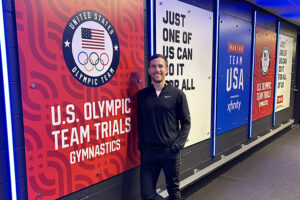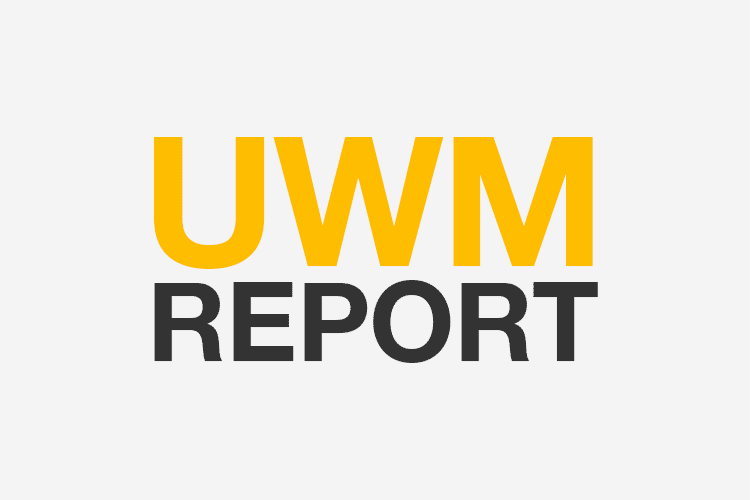Andrew Vail and Noah Kulas got immersed in research – literally – at the School of Freshwater Sciences.
Mariana Colorado worked with live animals for the first time in a lab.
Hidayah Osman worked in the community and got to know Milwaukee neighborhoods and people better.
All were part of this summer’s UR@UWM program, which offered four weeks of on-campus research opportunities to incoming first-year students.
The program, which is part of the Office of Undergraduate Research at UWM, started in 2009. This year 27 students joined campus mentors to learn more about research at a top-ranked research university.
‘An incredible opportunity’
Some weren’t set on majors yet, others got a chance to explore an area they’re interested in, and others worked in an area outside their planned major to get research experience.
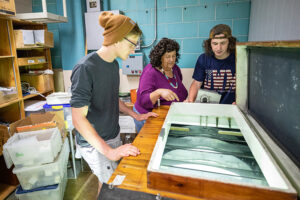
“I talked to my AP biology teacher (at Oak Creek High School), and she said it was an incredible opportunity,” Colorado said.
She worked with James Moyer, associate dean and associate professor of psychology, on research looking at the neurobiology of learning, memory and age-related deficit.
“A lot of people don’t start research until later in college because they didn’t know these opportunities exist,” Colorado said.
Vail, a graduate of Ronald Reagan High School, and Kulas, a graduate of Waukesha South High School, worked with Carmen Aguilar-Diaz, associate scientist, and Russell Cuhel, senior scientist, at the School of Freshwater Sciences, doing lake and harbor research.
Vail heard about the program at undergraduate orientation and applied right away. “I’m committed to the metropolitan area and getting involved in the community. At the same time UWM is a top-tier research university so this gives students a chance to work with faculty.”
Getting to know faculty
That chance to get to know faculty and staff was a benefit many of the students mentioned. Some said that before their summer experience, they might have been terrified of talking to a professor but found their mentors helpful and approachable.
“He was very open to answering questions and looking at results,” Colorado said of Moyer, her mentor.
“I liked the opportunity to work out in the community,” said Osman, a graduate of Bradley Tech High School. She worked with Arijit Sen, associate professor of architecture, on a research project, Buildings-Landscapes-Cultures Field School. She became involved in Sen’s field School, studying the culture and landscapes of urban garden in a neighborhood. “I liked meeting the people and sharing their positive image of their neighborhoods. I even went back for some events.”
Students found unexpected connections. “I learned there was more to AI (artificial intelligence) than just computers,” said Elizabeth Lappano, a graduate of Alan B. Shepard High School in suburban Chicago who worked with Nathaniel Stern of art & design and mechanical engineering. His studio does research at the intersection of art, science and technology.
‘Really glad I decided to do this’
Avery Leis from Westby High School and Jagger Vicente from Neenah High School worked with Todd Miller of the School of Public Health on his work involving the Panther Buoys, which are floating in Lake Michigan and are designed to help measure indicators of lake water health.
“I liked the combination of public health and working with water quality and computer science, said Vicente. “I was really glad I decided to do this.”
The incoming first-year students also developed friendships and found their way around. Leis, who comes from a rural area, said the summer program was a great way to get to know the campus.
“It was a good combination of academics and having fun,” he said. “I highly suggest it as a way of getting to know the campus.”
“It’s a really good way to segue into research and get to know people,” said Margrete Henderson, who graduated from Cedarburg High School. She and Maria Jansen of Random Lake High School worked with Chris Lawson, associate professor of educational psychology, on a project looking at cognitive development in children — how different modes of science impact our willingness to accept expert testimony.
The next generation
The UR@UWM program is attracting relatives of some of its earlier students.
“I heard about it through my sister,” said Weston Ingham, a Grafton High School graduate who plans to major in chemistry. “She was part of this program and graduated from UWM and highly recommended it to me.” Ingham and Joseph Parlier, a Dominican High School graduate, worked with Ionel Popa, associate professor of physics, studying protein molecules.
In addition to the scholarly activities, the program provided fun, friendships and opportunities for students to get to know each other.
Said Kulas at the the poster presentation session that closed the program:
“When I came here, I had no idea who these people were and in under a month, they were like family to me.”
